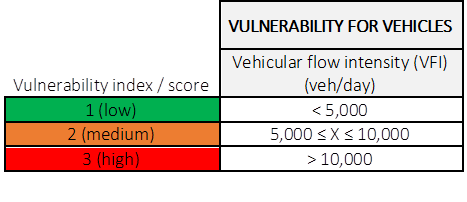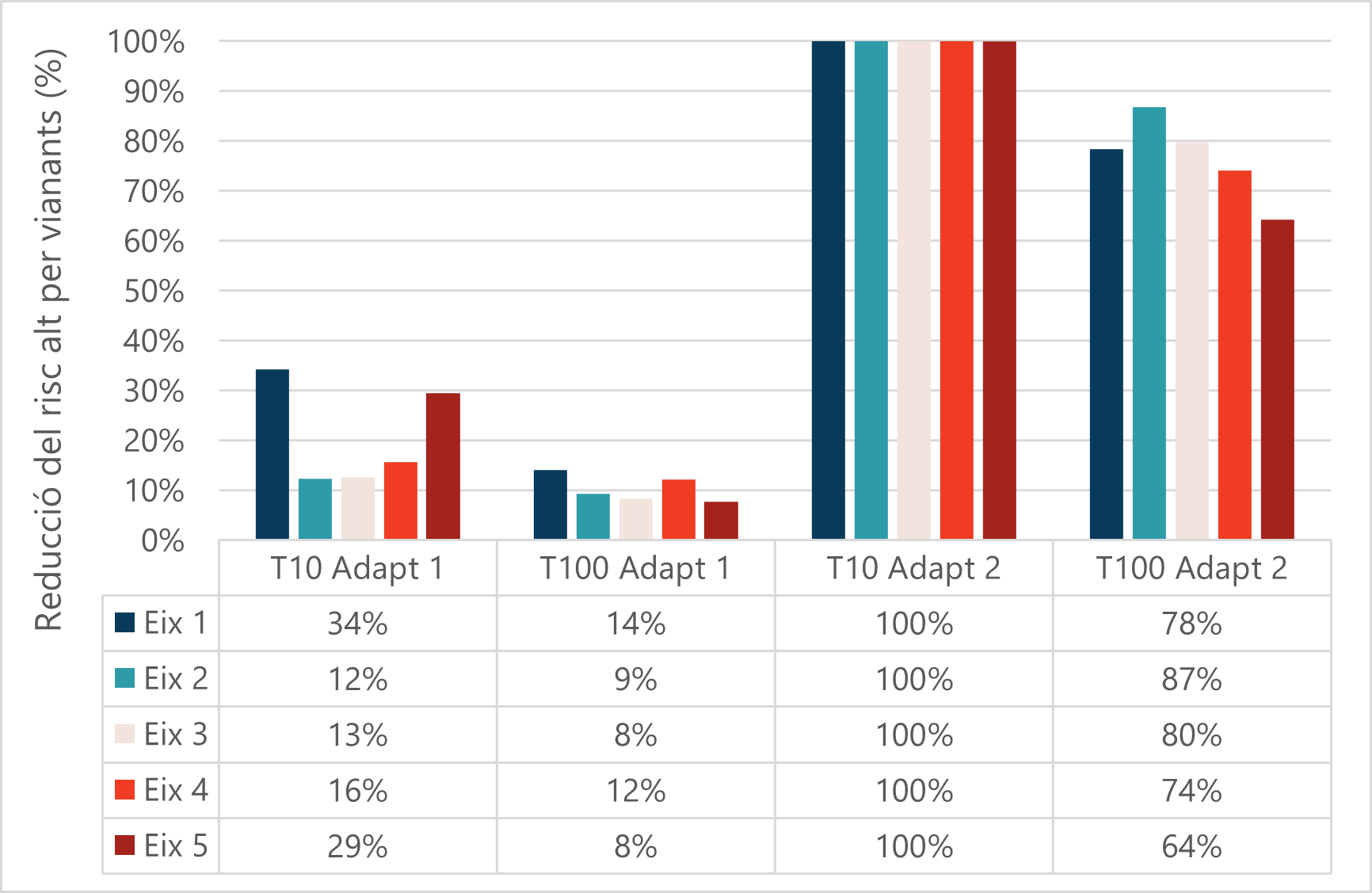Introduction
This study on how flooding affects the stability of pedestrians and vehicles is based on the results of the 1D/2D urban drainage model, where velocity and water depth are characterised as the main hydraulic variables that affect pedestrians’ and vehicles’ stability in the event of urban flooding from rainfall. The figure below shows how flow velocity and water depth determine the degree of hazard according to the thresholds proposed for the study, for pedestrians (a) and for vehicles (b):
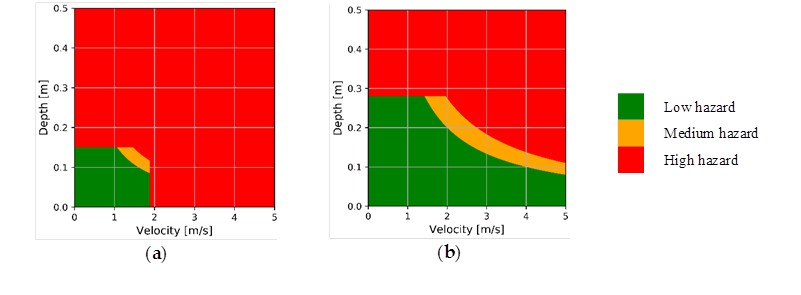
Hazard
The hazard maps represent the probability of a pedestrian losing stability, falling and being swept away by the water flow. High-hazard zones are areas where the hydrodynamic variables could cause a pedestrian to become unstable, depending on the intensity of the rainfall event, characterised by its return period. The map below shows the high-hazard areas for pedestrians for the simulated T1, T10 and T100 return periods, in both the current scenario and future scenario (i.e. with the changes caused by climate change on rainfall patterns):
For the one-year return period (T1), in both the current and future scenarios, the high-hazard areas are minimal (0.02% and 0.03% of the overall surface area, respectively). Therefore, in this case, climate change does not exacerbate the existing situation. For the ten-year return period (T10), the high-hazard areas grow by 240 ha, representing 3.9% of the city’s total walkable surface area. Climate change does not create new high-hazard areas, but it does extend existing zones consistently across all neighbourhoods to 312 ha, which is 5.1% of the total surface area. This constitutes a 30% increase in the city’s high-hazard surface area. In the case of T100, the current situation deteriorates significantly, as new high-hazard areas appear and existing T10 extend considerably, to cover 9.5% of the total surface area of Barcelona (585 ha). In the case of the future scenario, once again, there is a 30% increase in the walkable surface area deemed high-hazard for pedestrians, reaching 12.4% of the total surface area (762 ha). The following graphic summarises the results of the pedestrian hazard maps, categorised by level of hazard:
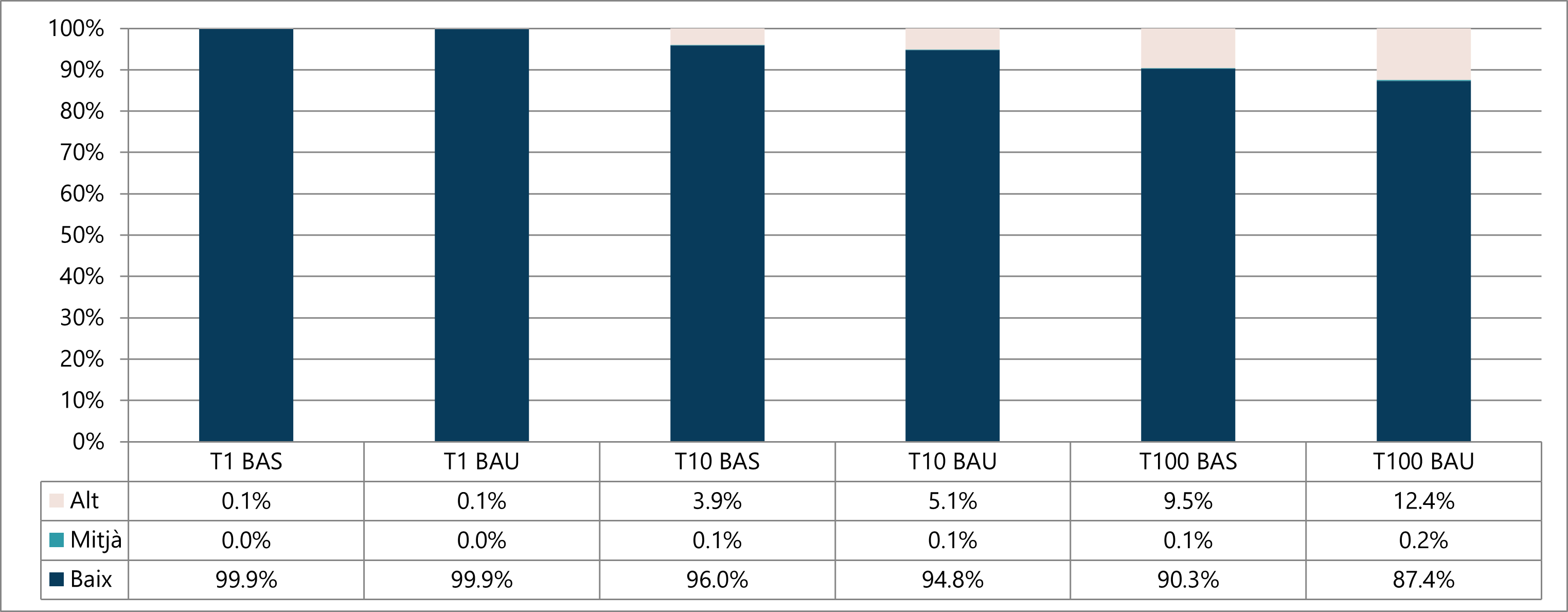
In addition, the following hazard maps show the probability of a vehicle being swept away by surface water flow:
Once again, the high-hazard areas for the T1 return period are practically non-existent. However, for T10, the high-hazard areas are the same as for pedestrians, except that in this case they are spread over fewer streets. In the current scenario, they cover a surface area of 110 ha (1.8% of the total), and in the future scenario, they cover 148 ha (2.4%), which is a 34% increase. For T100, the trend in the pedestrian hazard results is reproduced, with an increase of 318 ha (5.2%) in the current scenario and of up to 433 ha (7.1%) in the future scenario (constituting approximately a further 35% increase). The following graphic summarises the results of the vehicle hazard maps, categorised by level of hazard:
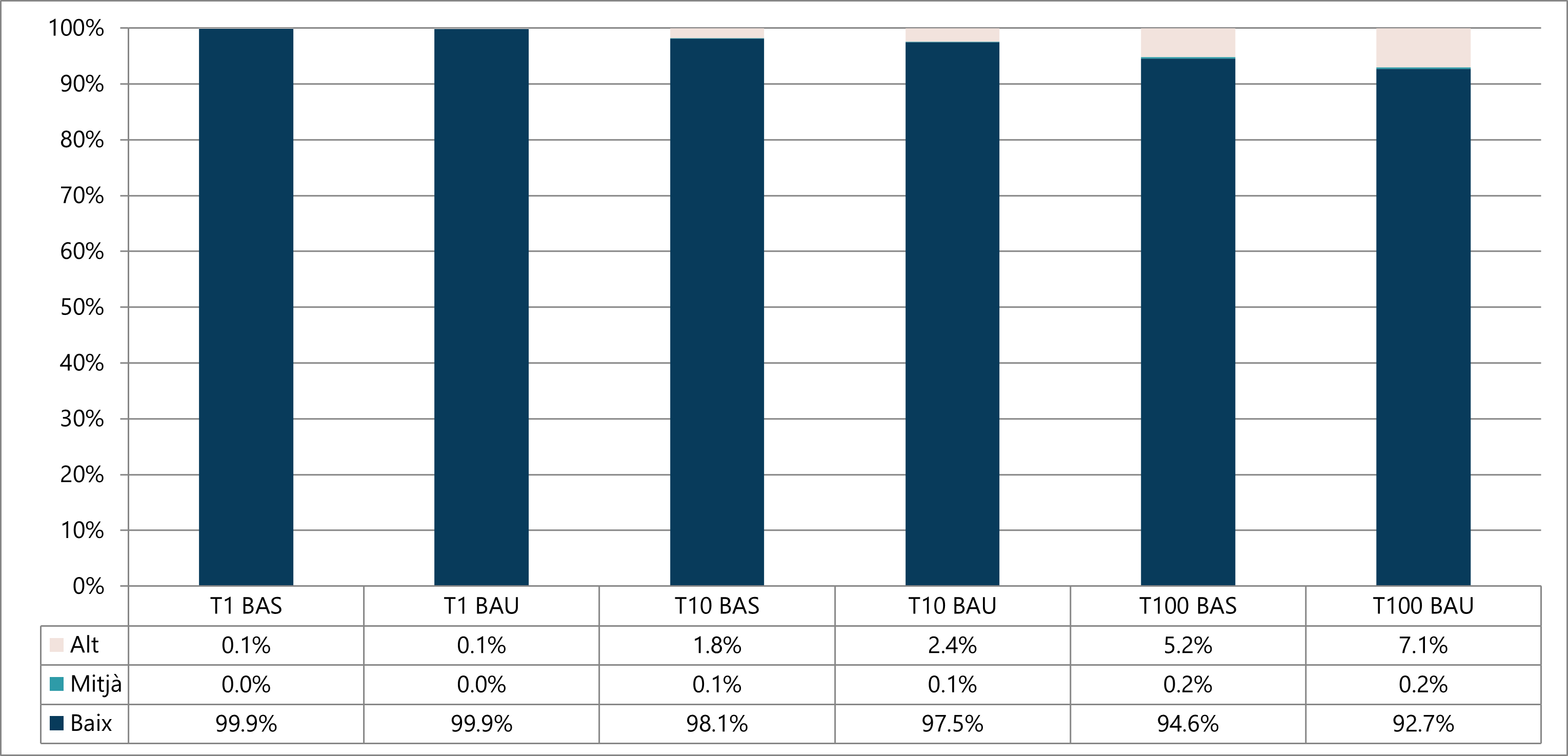
Therefore, following examination of the results of the hazard areas for pedestrians and for vehicles, the following conclusions can be drawn:
-The hazard trends are similar for pedestrians and vehicles.
-The medium-hazard areas are irrelevant for all return periods.
-The surface area of the pedestrian high-hazard zones for is twice that of the vehicle high-hazard zones, indicating that pedestrians are less stable than vehicles, as the latter is more resistant to slipping.
-The high-hazard areas are practically non-existent for T1, even in the future scenario. This is down to the fact that the city’s sewage system is designed for a T10 design period. Therefore, for T1, no climate change impacts caused by increased design rainfall are observed, as the system has the capacity to absorb it without difficulty.
-From T10 upwards, a proportional hazard increase of around 30–35% can be seen for all return periods.

